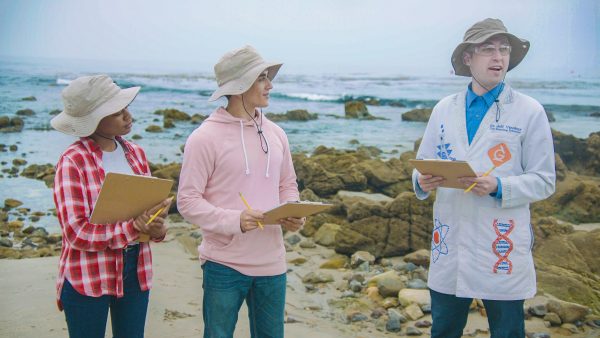Bioindicator Definition
A bioindicator is an organism that reveals ecosystem health changes, indicating potential problems. For example, a declining frog population can signal ecosystem imbalance.
View Lesson on Maintaining Biodiversity
Become a member to get full access to our entire library of learning videos, reading material, quiz games, simple DIY activities & more.
Become a member to get full access to our entire library of learning videos, quiz games, & more.
Plans & Pricingto watch this full video.

Access All Videos
and Lessons, No Limits.
Access All Videos

No credit card required,
takes 7 sec to signup.
No card required

Ready-to-go lessons
that save you time.
Ready-to-go lessons
If you are on a school computer or network, ask your tech person to whitelist these URLs:
*.wistia.com, fast.wistia.com, fast.wistia.net, embedwistia-a.akamaihd.net
Sometimes a simple refresh solves this issue. If you need further help, contact us.
Maintaining Biodiversity
Fun Facts
- Frogs indicate water quality changes as bioindicators.
- Worms are bioindicators that signal changes in soil quality.
- Lichen is a bioindicator sensitive to air quality changes.
Why Do We Need To Know About Bioindicator
Learning about bioindicators helps us know if an ecosystem is healthy or not. Bioindicators are things like frogs, worms, and lichen that show us if something bad, like pollution, is happening in the environment because they react to changes.
When we study bioindicators, we learn more about the environment’s condition. This knowledge can lead to jobs in saving the environment and making sure ecosystems stay healthy. People in these jobs work on finding ways and making rules to protect nature, showing why bioindicators are important for us.
Frequently Asked Questions
Check out the Full Lesson on Maintaining Biodiversity
In this lesson, we learn that:
- Biodiversity describes the number of different kinds of organisms in an ecosystem.
- Scientists measure biodiversity to determine an ecosystem's health.
- Humans depend on healthy ecosystems for food, medicine and clean water.
Related Topics
- Balanced Force Definition
- Bioindicator Definition
- Carbon Dioxide Definition
- Carnivore Definition
- Cast Fossils Definition
- Comparative Anatomy Definition
- Computer Programming Definition
- Conductor Definition
- Conservation Biologist Definition
- DNA Definition
- Definition Of Experiment
- Dissolve Definition
- Divergent Boundary Definition
- Energy Definition
- Engineer Definition
- Erosion Definition
- Gas Definition
- Generator Definition
- Genetic Factors Definition
- Glacier Definition
- Gravity Definition
- Heating And Cooling Definition
- Information Transfer Definition
- Inherited Traits Definition
- Keystone Species Definition
- Larvae Definition
- Lever Definition
- Light Year Definition
- Magnetism Definition
- Mitochondria Definition
- Ocean Current Definition
- Opaque Definition
- Opposable Thumb Definition
- Parasitism Definition
- Pendulum Definition
- Photosynthesis Definition
- Prevailing Winds Definition
- Recycle Definition
- Reflecting Surface Definition
- Seismologist Definition
- Solubility Definition
- Species Definition
- States Of Matter Definition
- Total Eclipse Definition
- Vibrating Definition
- Water Definition
- Water Erosion Definition
- Weather Definition
Start a Free Trial Today. Get a $5 Amazon Gift Card!
Teachers! Start a free trial & we'll send your gift card within 1 day. Only cards left. Try it now.
Select Grade
Select Subject
This email is associated with a Science Kit subscription. Kit subscriptions are managed on this separate page: Manage Subscription

-
Download InvoiceScience & Math$/yr
-
Download InvoiceScience Only$/yr

access all lessons
• No credit card required •
"My students loved the videos. I started the video subscription in May and used them as a review before the state test, which I know contributed to 100% of my class passing the state test."
Rhonda Fox 4th Grade Teacher, Ocala, Florida
• No credit card required •
"My students loved the videos. I started the video subscription in May and used them as a review before the state test, which I know contributed to 100% of my class passing the state test."
Rhonda Fox 4th Grade Teacher, Ocala, Florida
• No credit card required •
Already a member? Sign In
* no credit card required *

* no credit card required *
* no credit card required *


no credit card required
Skip, I will use a 3 day free trial
Enjoy your free 30 days trial
-
Unlimited access to our full library
of videos & lessons for grades K-5. -
You won’t be billed unless you keep your
account open past your 14-day free trial. -
You can cancel anytime in 1 click on the
manage account page or by emailing us.
-
Unlimited access to our full library of videos & lessons for grades K-5.
-
You won't be billed unless you keep your account open past 14 days.
-
You can cancel anytime in 1-click on the manage account page.
Cancel anytime in 1-click on the manage account page before the trial ends and you won't be charged.
Otherwise you will pay just $10 CAD/month for the service as long as your account is open.
Cancel anytime on the manage account page in 1-click and you won't be charged.
Otherwise you will pay $10 CAD/month for the service as long as your account is open.
We just sent you a confirmation email. Enjoy!
DoneWe use cookies to make your experience with this site better. By using this site you agree to our use of cookies. Click "Decline" to delete and block any non-essential cookies for this site on this specific property, device, and browser. Please read our privacy policy for more information on the cookies we use.Learn More
We use cookies to improve your experience. By using this site, you agree to our use of cookies. Click "Decline" to block non-essential cookies. See our privacy policy for details.Learn More



























































































































